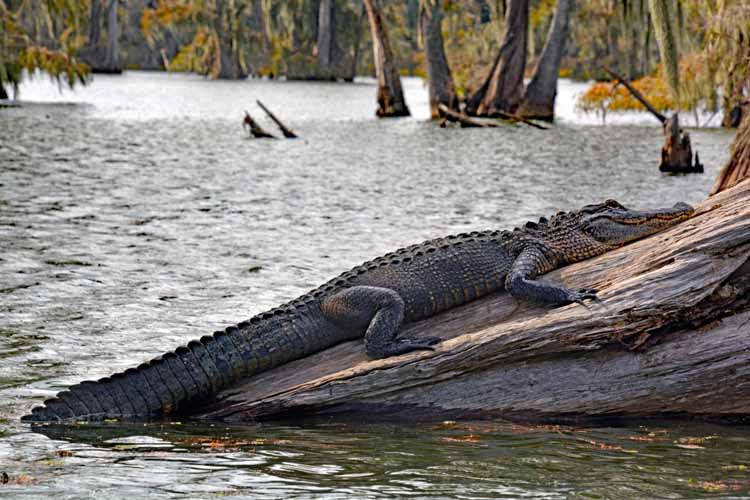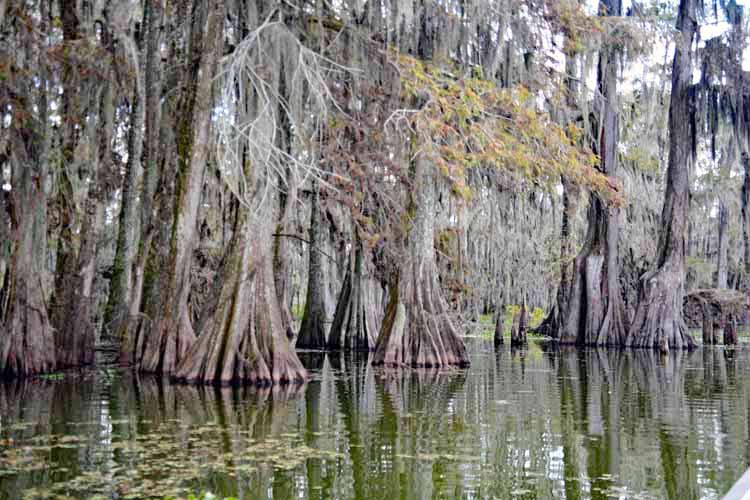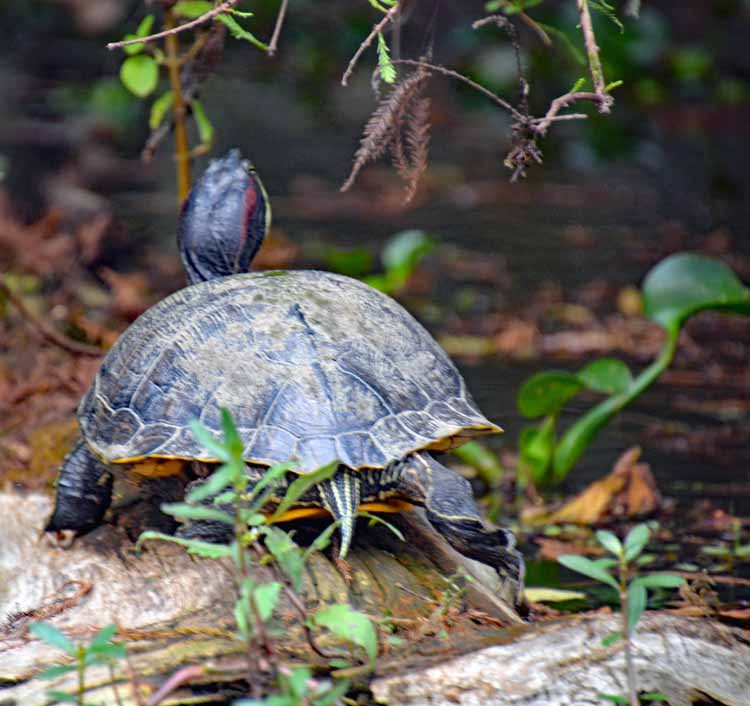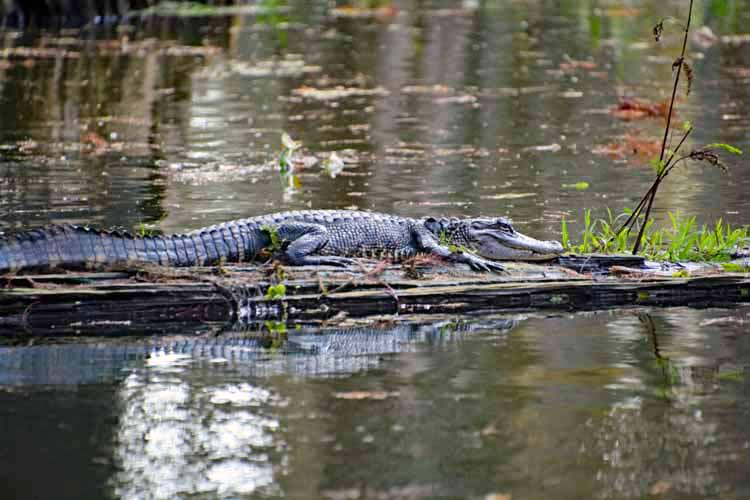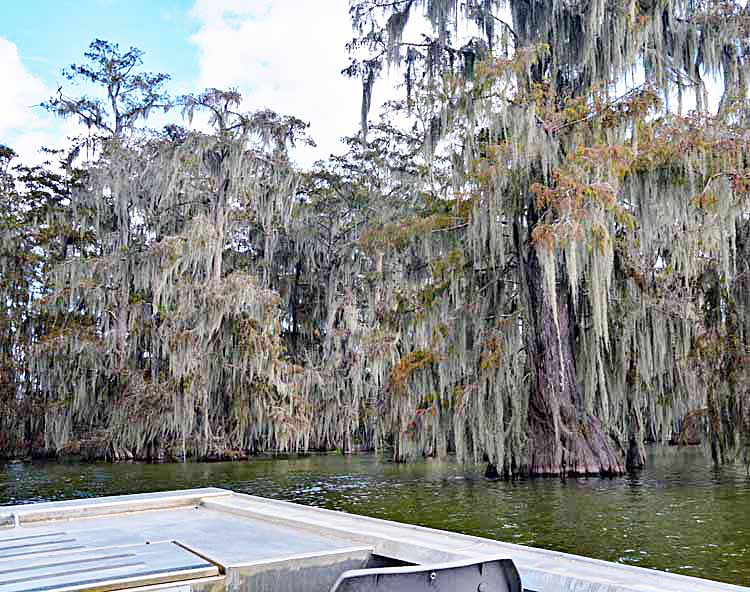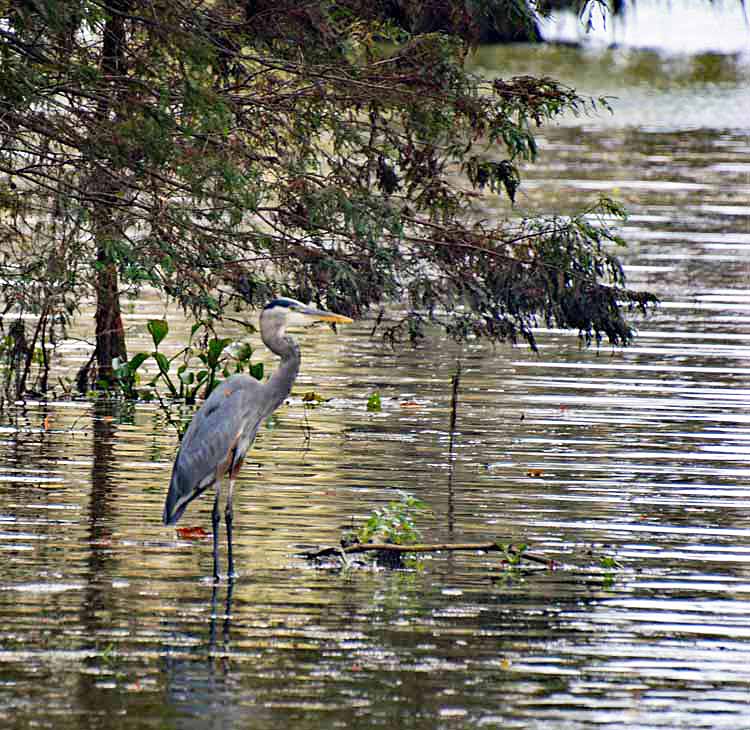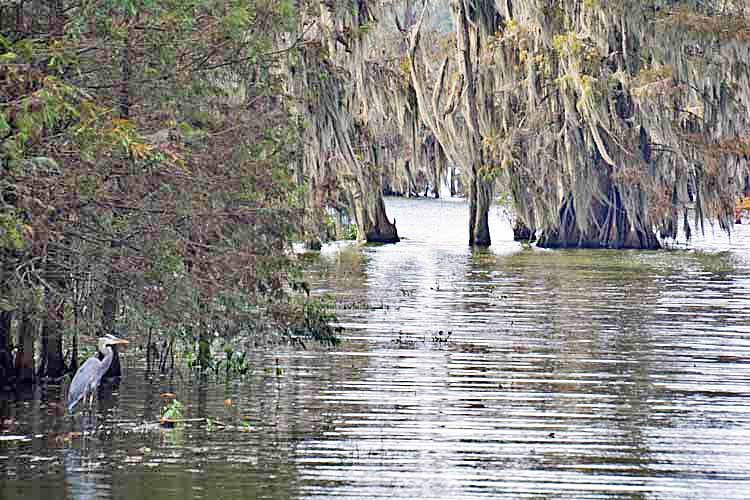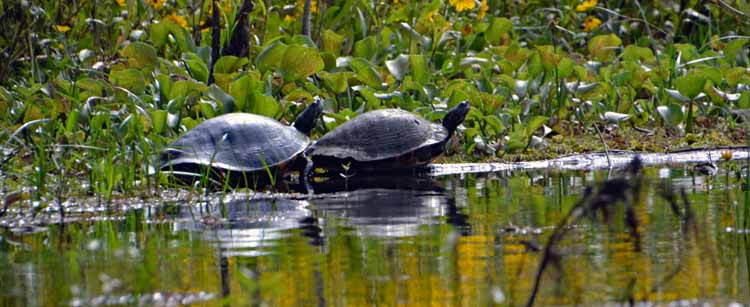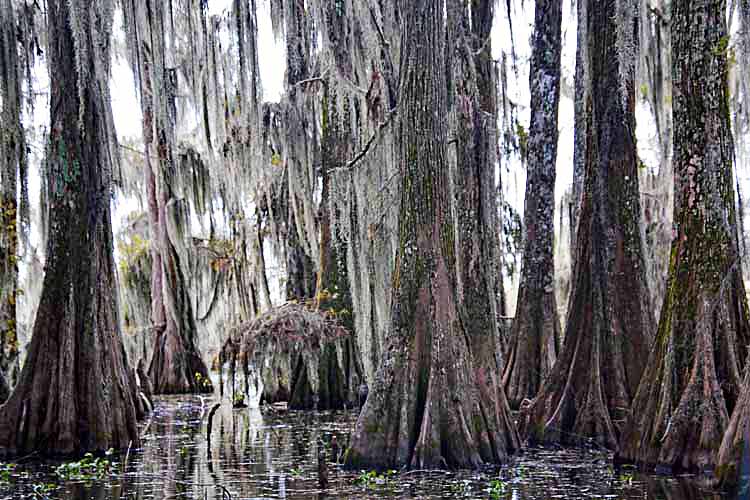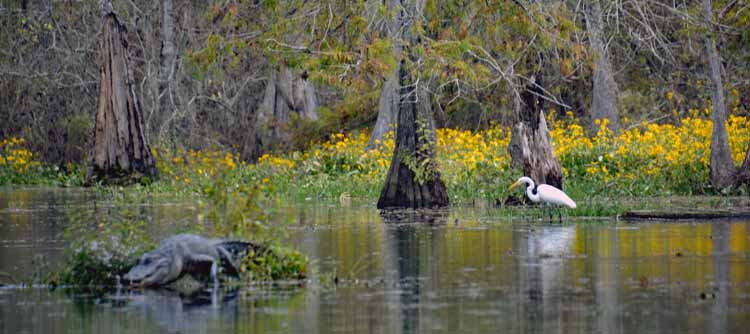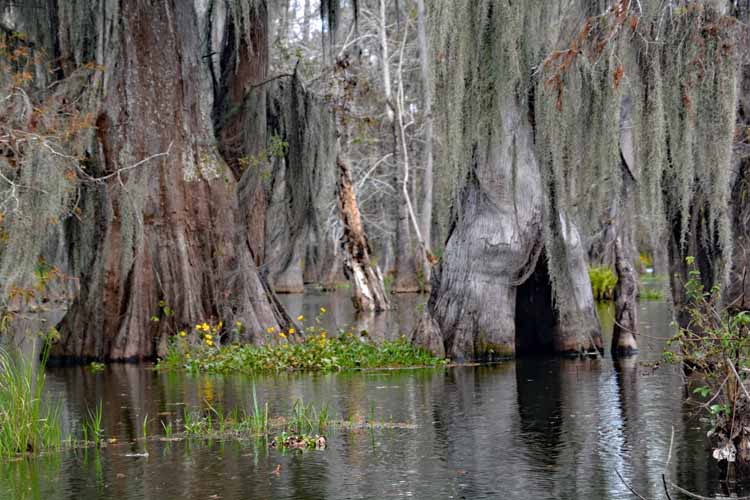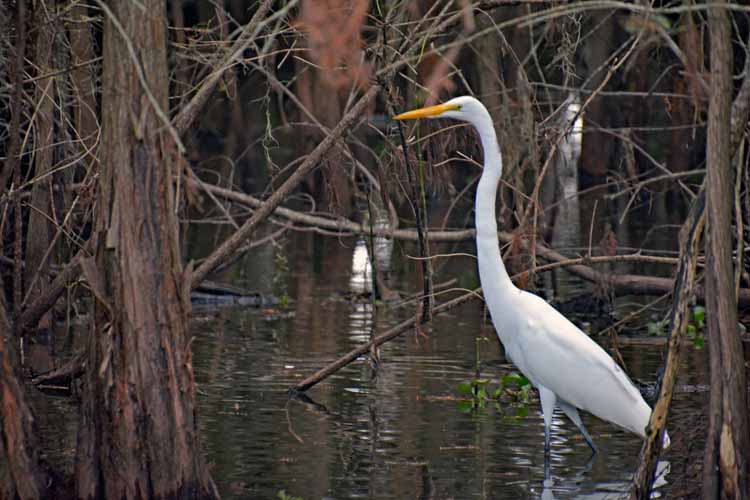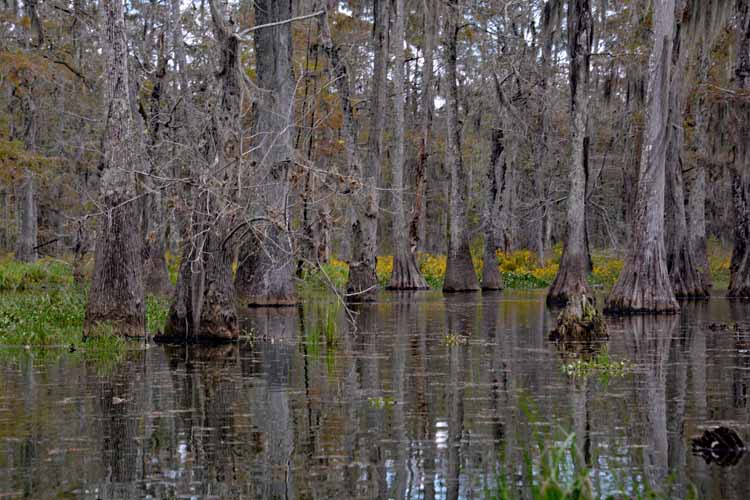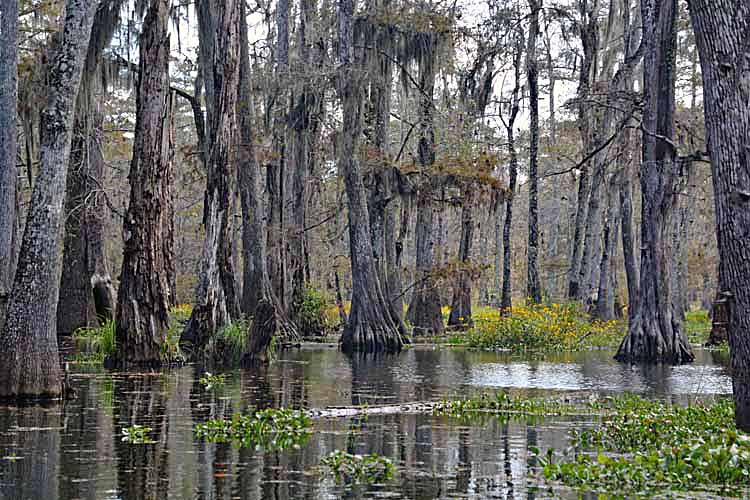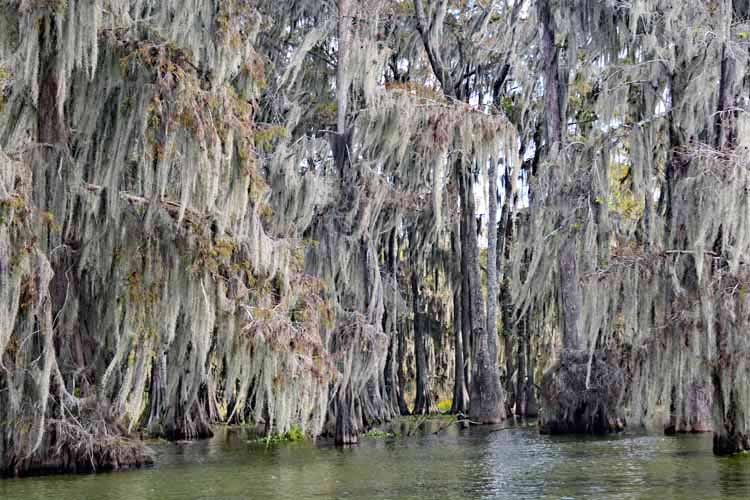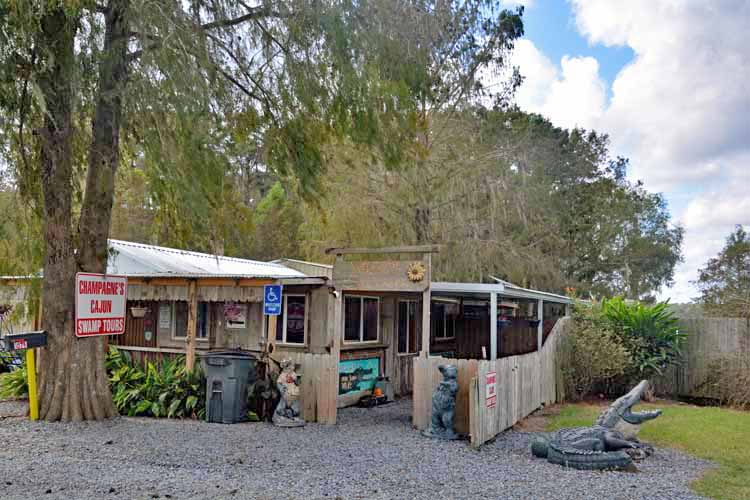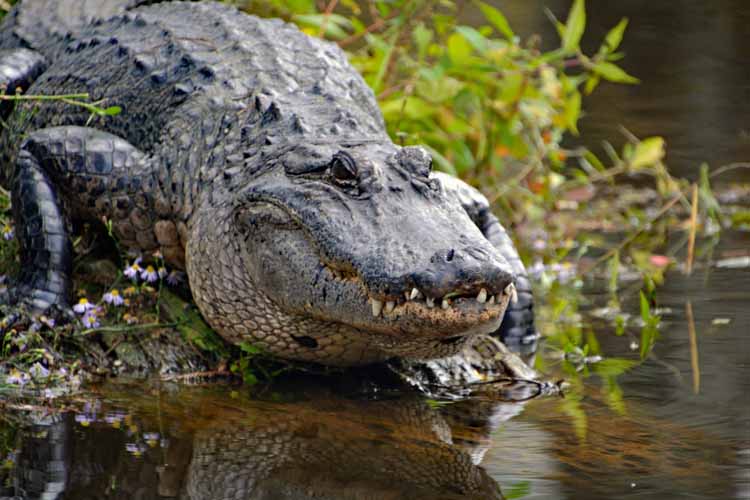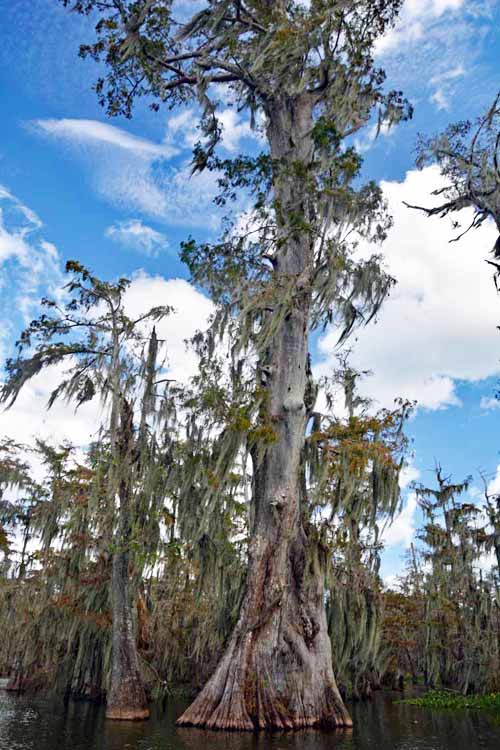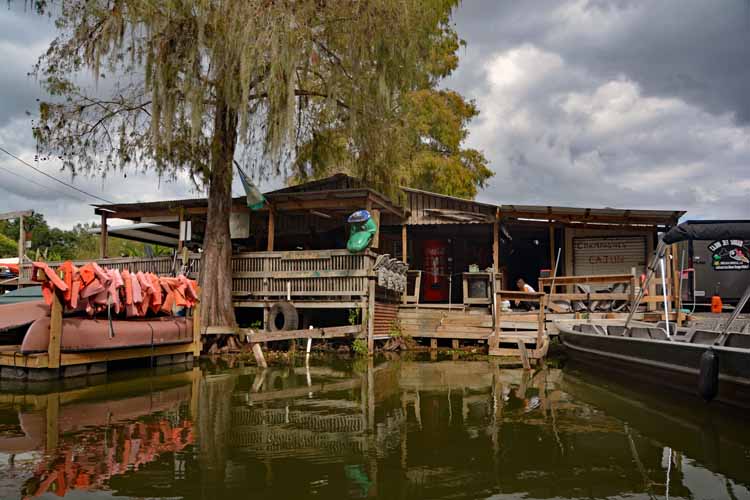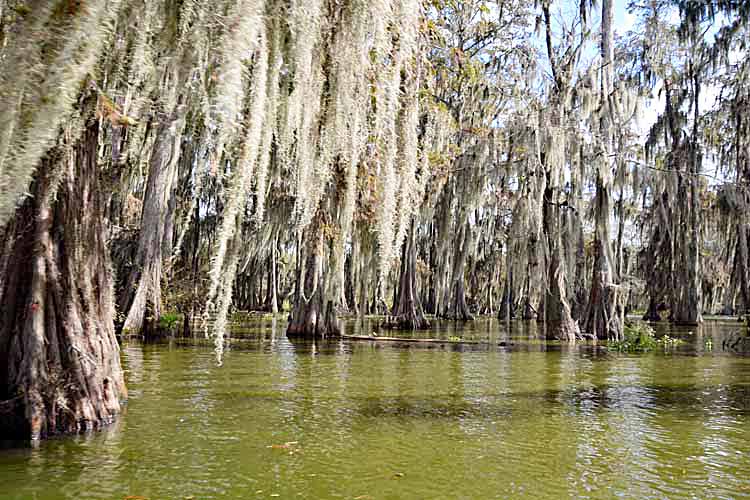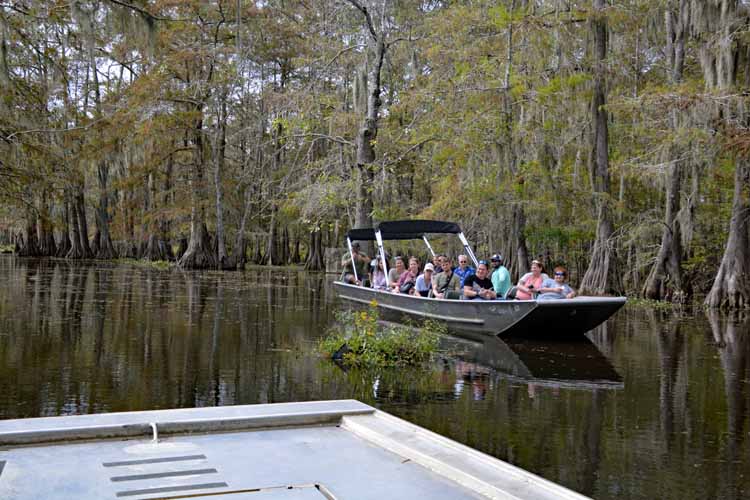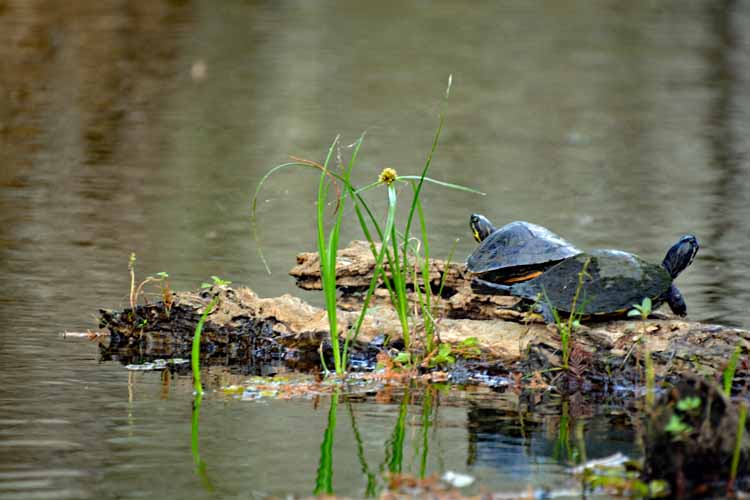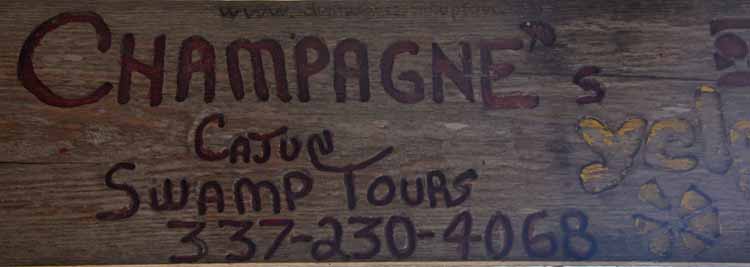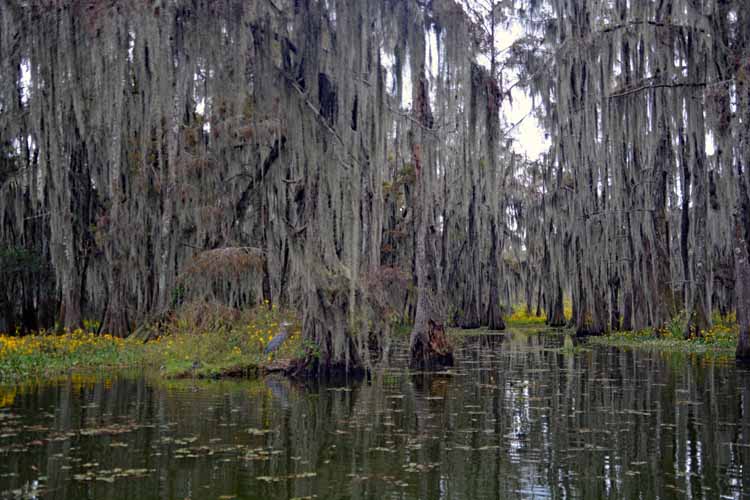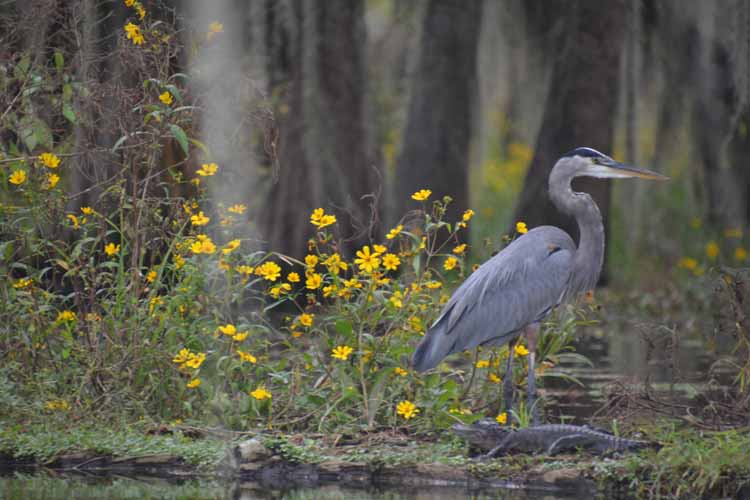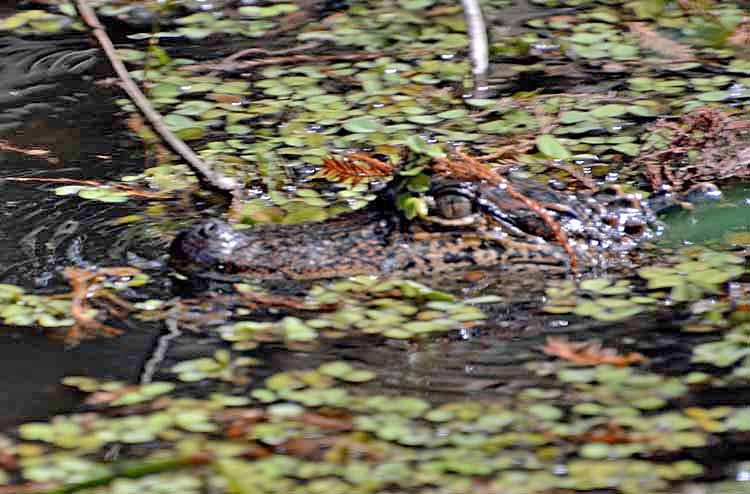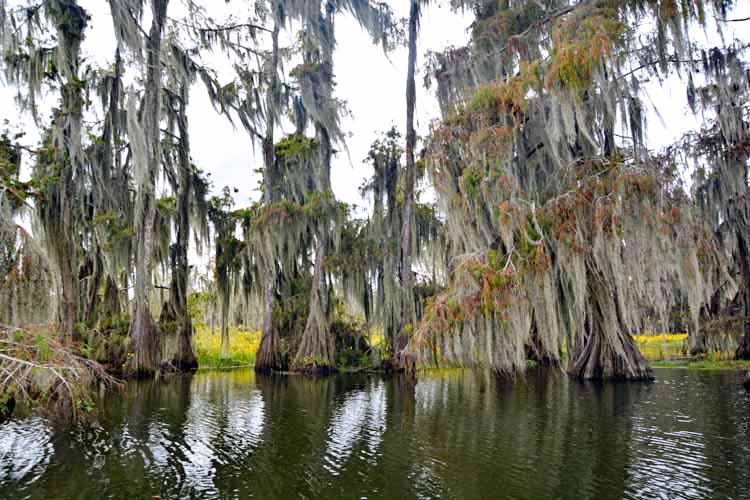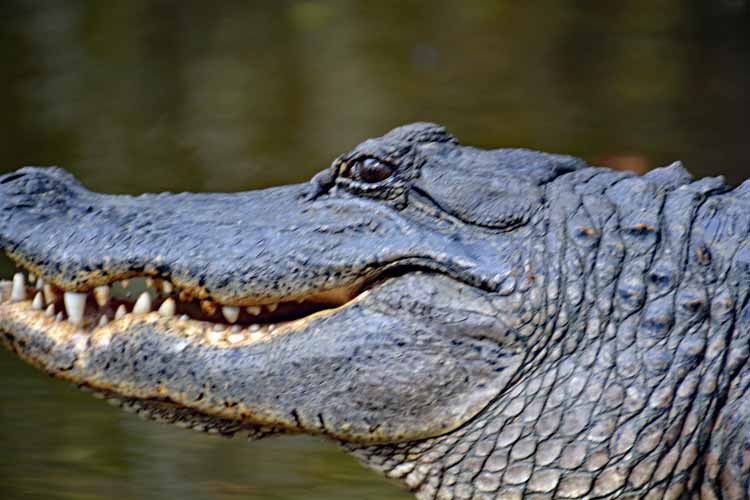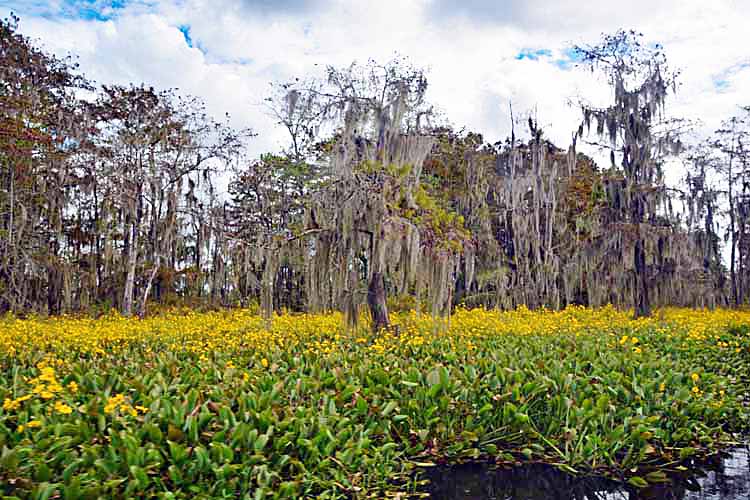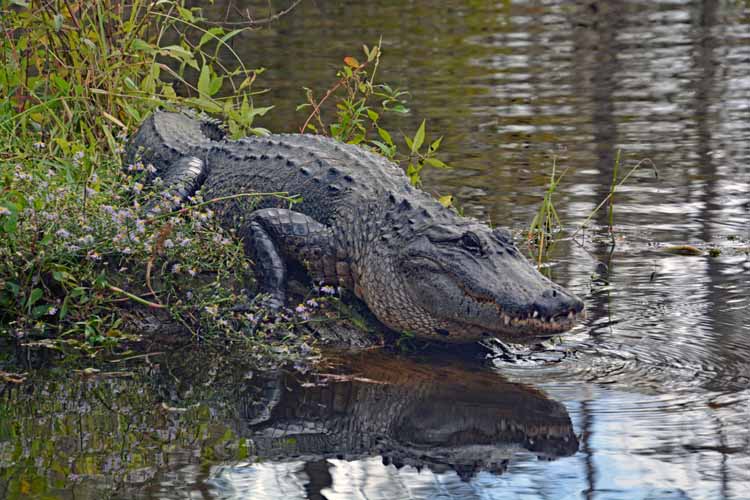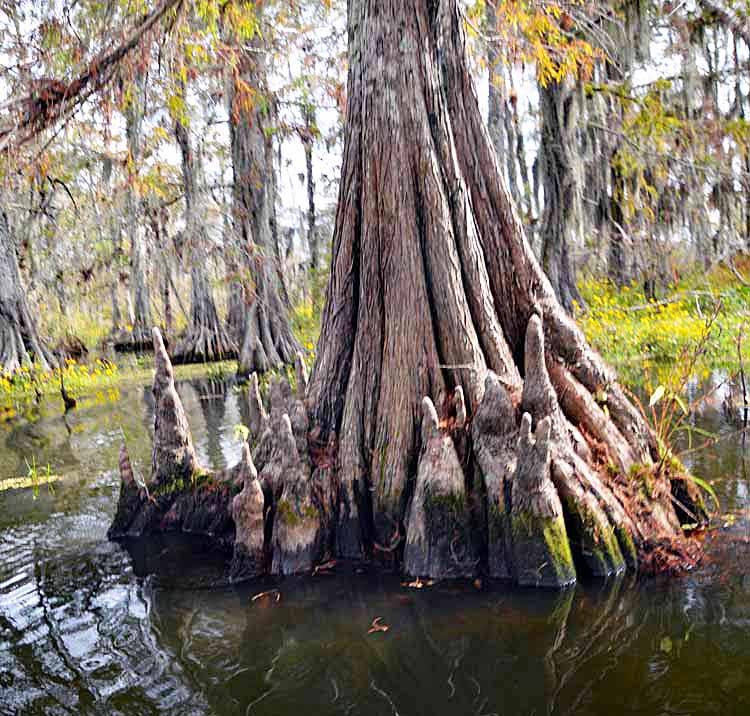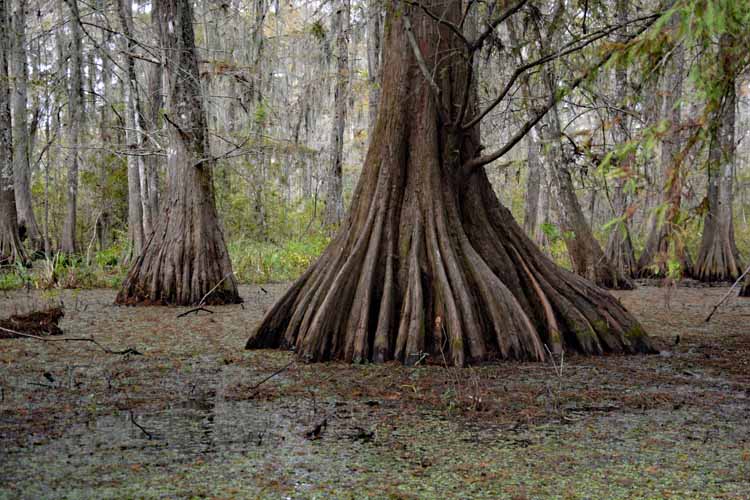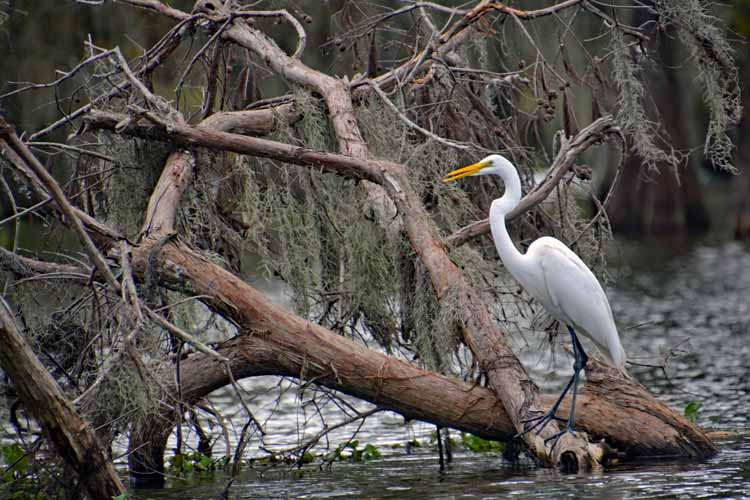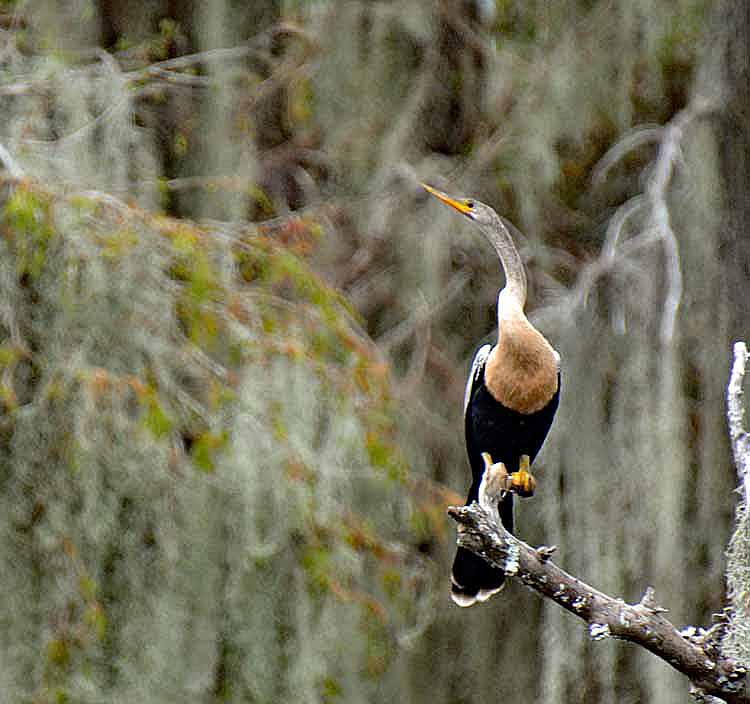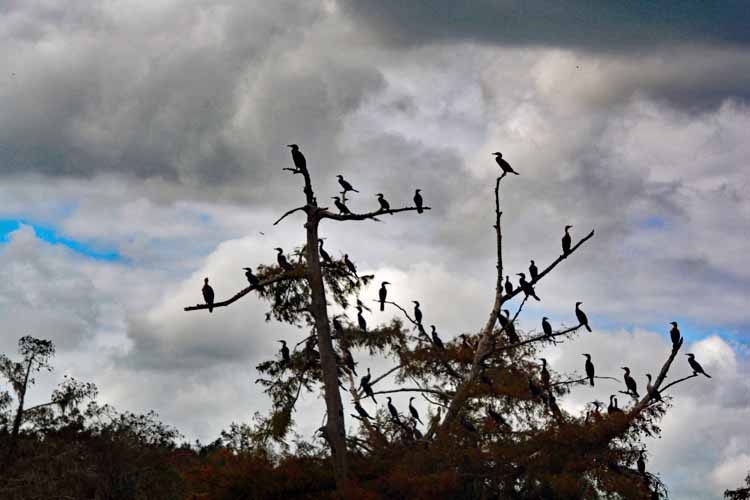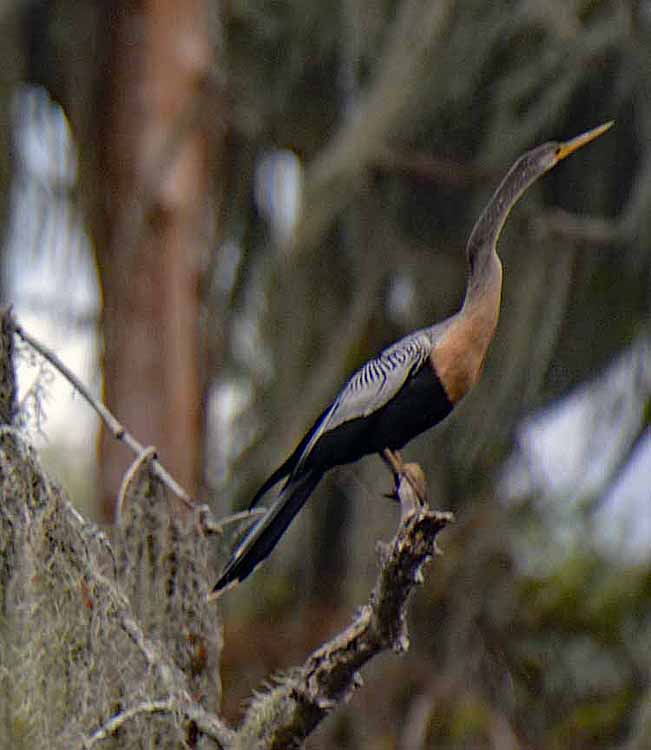the wandering chick
...A Swamp Tour
St. Martin Lake
Many of us southerners travel the Interstate 10 through Louisiana several times in our lifetime. In both directions we look out to thousands of Cypress knees dotting a vast field of water as we cross the Atchafalaya Basin.
The Atchafalaya Basin (an American-Indian word meaning long river) covers an area of 1.4 million acres and is the last large river swamp in the States. The basin provides food and shelter for 50 percent of our migratory water fowl. It is a natural habitat and nesting ground for some 300 species.
The basin covers 14 Louisiana parishes, one of which is St. Martin. It is here, near the city of Breaux Bridge, that I hopped the boat heading into the 'gator-infested waters of St. Martin Lake. Not to worry. 'Gators only hunt at night. During the day hours they can be seen resting above water on logs, some of which aren't quite as long as the 'gators themselves.
It was a beautiful ride, gliding through the moss-covered cypress trees and the floating flower beds. Enjoy the view.
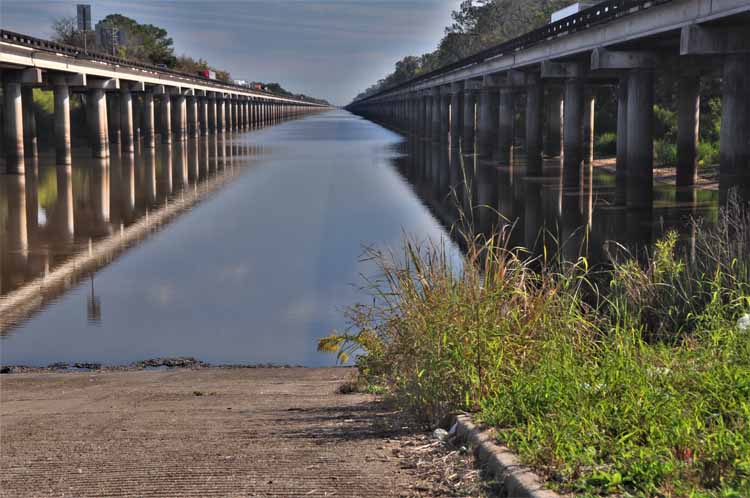
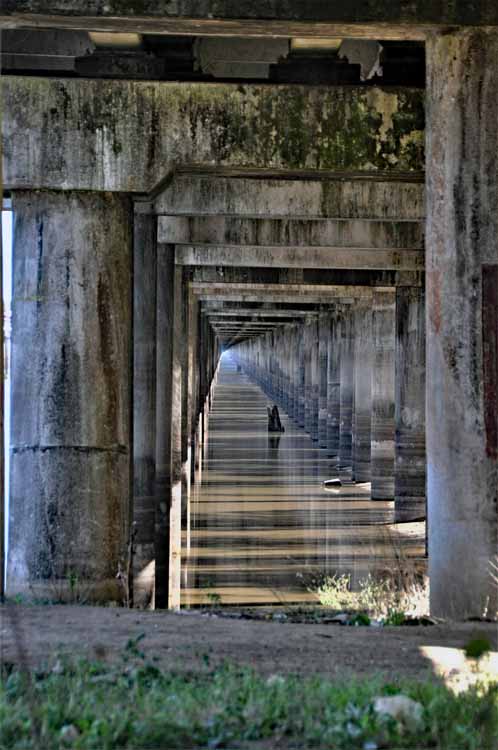
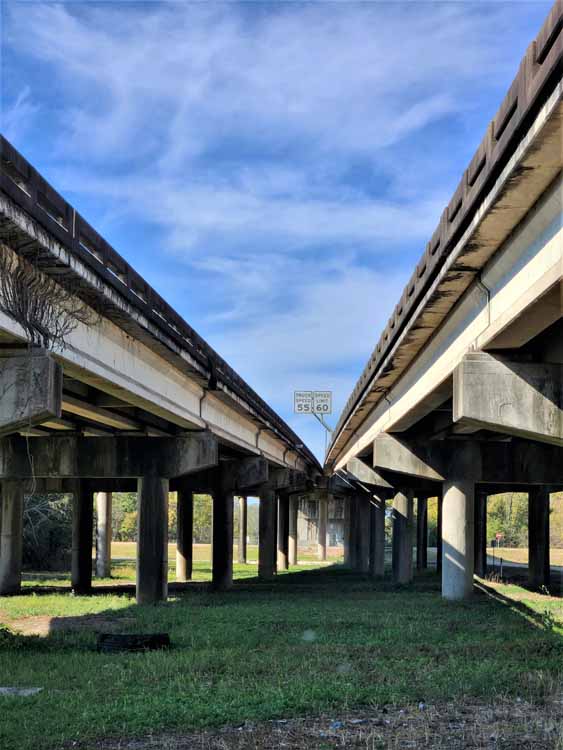
The Atchafalaya Basin Bridge was opened in 1973, and, at the time, was the 2nd longest bridge in the United States. Today, it is the 14th longest in the world, at 18.2 miles.
There are actually two bridges which parallel each other, one east-bound and the other west-bound.
They are supported above the swamp by huge pilings, some of which reach more than 140 feet into the water.
A wonderful and educational Atchafalaya Welcome Center is worth a visit. It's located at Exit 121 off the bridge.
The bald cypress trees here in the swamp are considered "new-growth" trees and are estimated to be between 95 and 140 years old. According to our tour guide, this particular tree pictured here is said to be 400 to 500 years old. Bald cypress trees in the Black River of North Carolina are said to be much older.
This section of the Atchafalaya swamp where the cypress trees grow is freshwater. Farther south, as it gets closer to the Gulf of Mexico, it blends with a more salty marsh.
For not being tourist season, I was surprised by the number of people who signed up, seemingly, from all over the place, for this one-hour-plus tour. There were around 40 of us, including a French-speaking family. Our tour guide/captain had a delightful Cajun accent. The tour is located just outside the town of Breaux Bridge, on the St. Martin Lake.
An alligator's length can be measured by estimating the number of inches between the end of its snout to its eye. One inch equals one foot. Six inches, say, between eye and snout is estimated to be a six-foot gator.
The bird pictured here is an egret, and in the photo to the left is a great blue heron. We found them throughout the swamp.
Thank you for visiting these photo pages.
If you're interested in seeing more, please return to my Main Menu at the bottom of my home page and make your selection.
All images within thewanderingchick.com Web site are copyright protected. They may not be downloaded or otherwise copied.
Please contact me if you think a particular photo or set of photos can be used in your publication.
Alligators have between 74 and 80 teeth. Under the surface of a good tooth, a replacement tooth is being formed. Gators' teeth can be replaced up to 50 times in their lifetime. This poor guy must have used up his quota.
The yellow foliage is not grounded. It is a floating mass and provides nutrients and nesting grounds for much of the waterfowl. From mid-February until the end of July, boating is restricted.
Cypress knees are shoot-offs from the root of the tree and are thought to help stabilize the tree. Before the logging of cypress trees, which began as early as the 1700s, the basin was so thick with 1000-year-old trees that light could not penetrate.
Look closely. There's a 'gator among them leaves.
A group of cormorants is called a "gulp."
The Anhinga is a water bird similar to the cormorant. It's nicknamed a snake bird because of how its long, slender neck looks while the bird is in the water.




